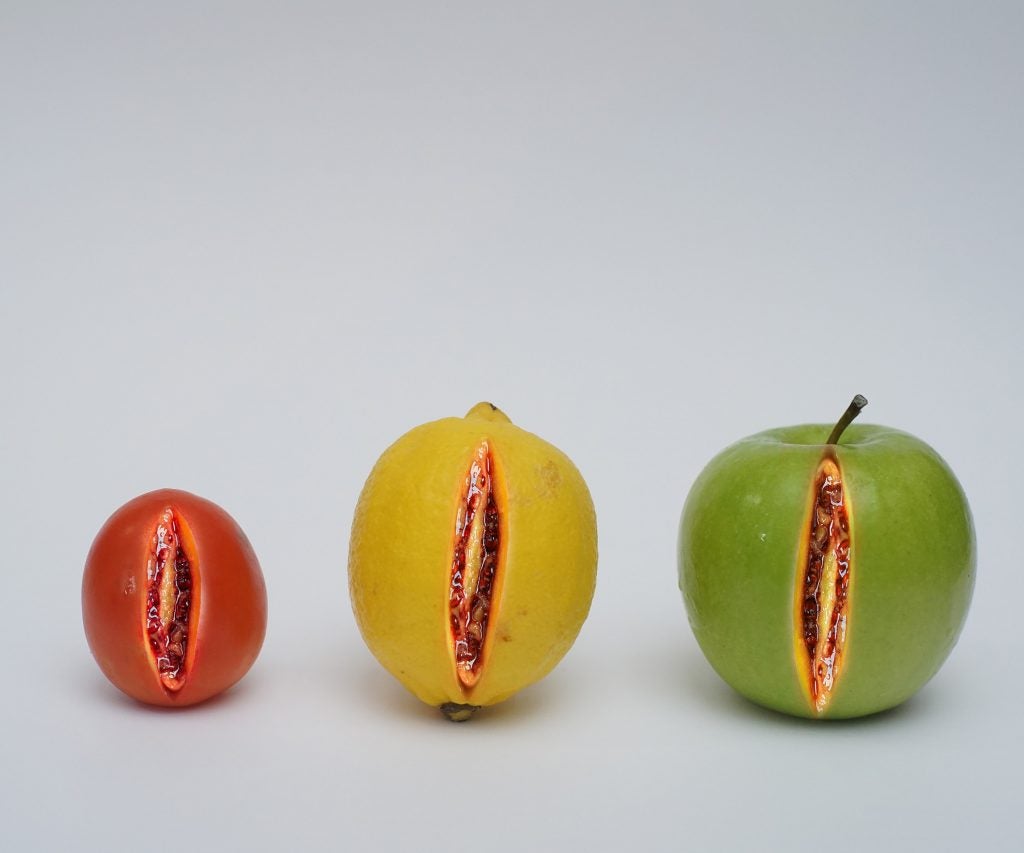
Pain or discomfort during intercourse is quite common among females and some males. About 60% of females experience painful intercourse at least once during their lifetime. Painful intercourse can also affect males; however, it is not as common. Dyspareunia it is defined as chronic pain in the genital area either during or shortly after intercourse.1 Dyspareunia can be caused by many physiological and psychological factors, and the symptoms and description of pain may vary from person to person.
Symptoms of dyspareunia can be categorized as either superficial pain or deep pain during repeated penetration. Anxiety, fear, and negative internal monologues during sex are also common factors that lead to dyspareunia. Most common causes of painful intercourse can be relieved by the use of an artificial lubricant, increased foreplay, and small lifestyle adjustments; however, many physiological conditions require assessment and treatment from a medical professional. This article explores various causes, symptoms, and treatments of dyspareunia that range from mild irritation to chronic and persistent genital pain.
Table of Contents
Superficial Dyspareunia
Pain during penetration that occurs at the anterior portion of vulva can be caused by physiological factors such as inadequate lubrication, the presence of scar tissue in certain areas, and the tearing or stretching of the hymen. More severe conditions that cause dyspareunia such as vaginismus, vulvodynia, and topical infections may require more complicated procedures to diagnose and treat.
Vaginismus

Vaginismus is a condition characterized by involuntary spasms of the pelvic floor (PC) muscles that surround the vaginal canal and is often the most extreme form of dyspareunia. Females who experience vaginismus report extreme coital pain, characterized by burning or itching, particularly upon penetration. In the most extreme cases, penetration is impossible due to the increased tightness of the vagina caused by involuntary contractions.
Vaginismus is treatable through proper medical care and patient cooperation. Common forms of treatment include pelvic floor physical therapy, dilator therapy, Botox injections, cognitive psychotherapy, and sexual therapy.
Vulvodynia
Vulvodynia (chronic pain in the vulvar area) is characterized as an itching or burning sensation or general discomfort on the vulva. Pain associated with vulvodynia does not necessarily stem from sexual activity; it can also occur from any type of pressure applied on the vulva including sitting down or wearing tight clothing.3 However, pain is most commonly exacerbated during intercourse. Vulvodynia can be diagnosed by a simple gynecological exam, which entails a physician using a Q-tip to apply pressure on the vulva while the patient verbally rates the relevant level of discomfort she is experiencing.
There is no single “cure” for vulvodynia. Treatments are available, however, and their effectiveness differs from person to person. These treatments include pelvic floor physical therapy, trigger point therapy, and myofascial release. These treatments are usually provided by a professional therapist in a medical facility. Lifestyle accommodations such as wearing loose clothing, rinsing after urination, and using ice on the vulva when pain is more severe can also temporarily alleviate the symptoms of vulvodynia.4
Infections
Urogenital conditions like urinary tract infections (UTIs), yeast infections (vaginitis), or urethral conditions are also common sources of sexual pain. Certain vaginal infections may be present without noticeable symptoms. The friction of a penis, dildo, or finger on the vulva or in the vagina may cause symptoms of dormant infections to appear during intercourse. Herpes sores on the external parts of the vulva may also heighten sensitivity during penetration. Untreated vaginal infections may cause lesions and inflammation in the vagina. They can also significantly increase the chance of transmitting or contracting an STI. Females who have vaginal infections are more likely to give birth prematurely and have birth complications.
Most vaginal infections can be easily diagnosed and treated with a pelvic exam and prescription medication. There are also different antiviral medications that can be used to suppress herpes outbreaks. Good hygiene is an important factor to preventing genital infections. Individuals should urinate shortly after sexual intercourse and drink plenty of water to clean out the urethra and avoid infections that cause painful intercourse and general genital pain.
Deep Dyspareunia
Deep, interior pain or aching during penetration that may stop when penetration stops or continue for minutes or hours after coitus may point to several different illnesses and conditions. Endometriosis, pelvic inflammatory disease, and other conditions affecting the female reproductive system are serious intrauterine conditions that may require hormonal treatments or even minor surgeries.
Endometriosis
Endometriosis is a disease in which the endometrial lining of the uterus grows on the outside of the uterus and covers nearby organs. The pain caused by endometriosis during sexual activity is more commonly referred to as a “deeper pain” as opposed to “pain upon entry.”
Symptoms of endometriosis can usually be alleviated by using birth control pills. Birth control pills serve as hormone therapy. Hormones, including estrogen and progestin, cause the patches of endometrial lining to go through a cycle similar to the menstrual cycle. Birth control pills stop the production of these hormones causing ovulation to stop, subsequently impeding new patches from forming. Birth control pills also alleviate pain from cramping.5 If you are experiencing any of the symptoms of endometriosis, it would be best to schedule an appointment with a physician to prevent any irreparable or severe damage to the reproductive organs.
Pelvic Inflammatory Disease (PID)
Pelvic Inflammatory Disease (PID) is a severe infection of the female reproductive organs that results from the spread of a previously existing infection. PID can be caused by a variety of infections, but it is most commonly a complication of untreated sexually transmitted infections (STIs). Pelvic Inflammatory Disease is very common; in the United States alone, more than one million American females are diagnosed with PID each year. Usual symptoms of PID are mild, but can become more severe if infections are left untreated.6 Symptoms vary from pain in the lower abdomen or back, fever, chills, and pain or bleeding during intercourse. Untreated PID can cause very serious, potentially life threatening health complications. A severe infection may rupture the fallopian tubes and affect the entire reproductive system. Even after PID is cured, scar tissue may form in the uterus and put a female at risk for ectopic pregnancy or infertility.
Currently, there are no definite tests that can confirm PID, however a doctor may order blood tests or vaginal swab tests to check for other bacterial STIs that may cause the symptoms.6 PID can be diagnosed and treated via laparoscopy and antibiotics.
Psychological Factors
Dyspareunia can also be caused by certain psychological factors or certain sexual circumstances. It is common for females to experience anxiety and fear during sex, which can interfere with the body’s natural sexual response causing decreased lubrication and increased vaginal tightness. In order to combat negative internal monologue (the thoughts that exist internally that cause anxiety), it is important for females to relax and concentrate on the pleasure that sex can bring. Proper communication with your partner is also vital for increasing positive internal monologue (the thoughts that exist internally that help you relax and enjoy sex).
Although psychological conditions do not all follow the biomedical model of diagnosis and treatment with medication, they are still a common source of dyspareunia and must also be assessed and treated to ensure a healthy and pain-free sex life. Experiences with sexual assault can cause anxiety and lead to sexual pain. Cognitive psychotherapy may be required to combat these symptoms.
Other Causes
Some conditions of dyspareunia are symptoms of aging or conditional circumstances. It may be caused by hormonal depletion from the onset of menopause, vaginal trauma from giving birth, reconstructive surgery (vaginoplasty), uterine cancer, or female genital mutilation.
Menopause

Symptoms of menopause can also lead to pain during intercourse. During menopause, the female body produces smaller quantities of female sex hormones, primarily estrogen, which in turn alters the body’s natural sexual response. Decreases in estrogen levels lead to the thinning of the vaginal walls and their lining as well as a decrease in natural lubrication. The symptoms of menopause are medically referred to as “vaginal atrophy” and can cause painful sexual intercourse.4 Decreased lubrication causes an increase in painful coital friction and, because the vaginal walls are thinner and less elastic than before, they are more likely to become inflamed during coitus.5 Because of these physiological changes, sex is more likely to irritate nearby organs such as the bladder and urethra. Hormonal changes can also cause the uterus to contract painfully during orgasms.
Vaginal creams containing estrogen can be prescribed by doctors in order to combat vaginal atrophy. However, the use of any water-based lubricant (KY Jelly or Astroglide) has been proven to alleviate sexual pain associated with menopause.
Vaginal Trauma

Vaginal trauma caused by stretching, tearing, or removing parts of the vulva may lead to pain during intercourse. While the vagina is usually flexible and can withstand stretching from childbirth or coitus, severe vaginal deformities may cause dyspareunia. Vaginal rejuvenation, or vaginoplasty can help tighten the pelvic floor muscles, remove scar tissue, and alleviate some symptoms of vaginal trauma.
A procedure called female genital mutilation (FGM) involves intentionally removing parts of the external female genitalia of young females in certain parts of the world. These procedures may cause permanent nerve damage and lifetime sexual difficulties.7 FGM can seriously harm the health and psychological well-being of its female survivors. The procedure is often irreversible and requires correctional surgery (deinfibulation) for female survivors with urethral blockage or difficulty giving birth 8.
Concluding Remarks
Vaginal pain is often preventable and easily treatable with careful screening and good hygiene! Always consult a medical professional if abnormal symptoms appear that may potentially lead to later complications:
- Pain during coitus
- Spotting between periods or after intercourse
- Change in odor or color of vaginal discharge
- Noticeable growths inside the vagina
- Itchiness and irritation of the vulva
Vaginal health can also be maintained through using condoms, doing Kegel exercises, and by reading labels on lubricants and medications. Regular checkups can also help ensure that vaginal problems are caught early on and treated as soon as possible. Most people experience sexual difficulties at one point or another, so do not let embarrassment keep you from visiting a health professional about your vaginal concerns. Please contact us here with any questions you might have!
References
- “Painful Intercourse (Dyspareunia).” Mayo Clinic, Mayo Foundation for Medical Education and Research, 12 Jan. 2018, mayoclinic.org.
- Heim, Lori J. “Evaluation and Differential Diagnosis of Dyspareunia.” American Family Physician, 15 Apr. 2001.
- “Vulvodynia.” Mayo Clinic, Mayo Foundation for Medical Education and Research, 22 July 2017.
- “Pain During Intercourse or Penetration.” Our Bodies Ourselves, 12 Feb. 2015.
- “What Are the Treatments for Endometriosis?” Eunice Kennedy Shriver National Institute of Child Health and Human Development, U.S. Department of Health and Human Services, 31 Jan. 2017.
- “Pelvic Inflammatory Disease (PID) – CDC Fact Sheet.” Centers for Disease Control and Prevention. Centers for Disease Control and Prevention, 01 July 2014. Web. 26 Jan. 2015.
- “What Is FGM.” End FGM, European Network, endfgm.eu.
- “Female Genital Mutilation (FGM).” NHS Choices, NHS, 16 June 2016, nhs.uk.
Last Updated: 17 April 2018.
